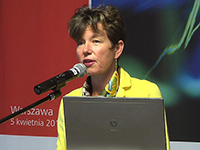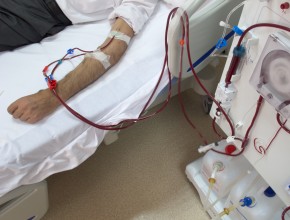In this section we usually summarize 3 articles that we consider worth knowing. Today, in a special edition of Publications of the Week, we present a short text that in our opinion should be read in its entirety. It was written by Dr Benjamin Tam, a Canadian intensivist from Ontario. We are proud to present it as part of McMaster Textbook of Internal Medicine.
He came from Buda
He came from Buda and she came from Pest.
I learned from Julie that afternoon that Budapest arose from the marriage of two independent and neighboring cities, Buda and Pest. Her account jumped between the city’s architecture, her people’s hospitality, and Steve, who now lay on his deathbed in front of us in the intensive care unit (ICU). “He was the nicest man,” she said, “The nicest man in the world.” Julie held his hands while Hungarian folk music played in the background. She turned to me and asked, “Why is Steve here? Will he get better?”
She had asked me that question often throughout the afternoon. Several days earlier Steve had a cardiac arrest at home. She had called the ambulance because he did not look well. When the paramedics came, they saw that she was unsafe alone, and so they brought her into the hospital as well. While Steve lay in the ICU intubated, sedated, and mechanically ventilated, Julie was admitted to the regular hospital ward and seen by a geriatrician, who diagnosed her with dementia and deemed her unable to live independently.
A battery of tests performed after Steve’s cardiac arrest portended a poor prognosis. Steve was dying. We tried to find family, but his children had not spoken with him for years. It only came out on a team meeting a number of days later that Julie was also admitted to the hospital. The nurses on her ward told me later how she had spent several days asking continuously about Steve. She did not know where she was but she knew something was wrong with Steve. She needed desperately to be with him. I’m embarrassed to say that by the time we went to find her, eight days had passed since the day they both had been hospitalized. We were able to restart a stopped heart but could not unite a lost love living three floors apart.
I don’t know who mentioned it first, or what sparked the conversation and realization. Someone said it, and we knew it would be important to unite them. When we first met Julie, she had just come back from visiting potential nursing homes. She smiled brightly as she welcomed us into her small, shared ward room. She was engaging, funny, and sincere. We told her we could help her find Steve. She was so overcome she offered us her last few dollars for our trouble. We spoke with her physician to make sure it would be reasonable to bring her for a visit. He told us it was the right thing to do.
When we wheeled her through the ICU, I could see tears welling up in the eyes of the clinicians who cared for Steve. She sat to his left and took his hand into hers. “Steve, honey, can you hear me?” She would turn back to me and ask, “Am I doing it right?” We helped her bathe him and played music from their childhood. She told me about their escape from Hungary to Canada and how they grew with each other over the years. He was a civil engineer and she loved to spoil him with goulash. To her, he was the nicest man in the world. She whispered to him, “Steve, wake up, I’ll take you dancing, I promise.” She looked at me with her soft gray eyes and asked me not to give up. I promised I would not. As the ventilator hummed, she called to him again, “Steve, honey, Steve…” We sat together that afternoon. Though I had nothing to offer to stop Steve’s dying, I am certain I kept my promise not to give up.
Fermata is the musical notation to hold a note beyond the normal duration. We have created this pause before death in the ICU. Before mechanical life support, tragic circumstances led to quick deaths. Now death during terminal critical illness can be stretched, as tests are performed, meetings are held, and decisions are made to find the best course of action. This space is a new ground. Over the years, the science of medicine has found ways to bring people back from the edge of death. We are not always successful, and in some cases patients meander between life and death, afoot in both worlds.
These times are the most difficult. Clinicians harden, families become anxious, and somewhere along the way the person behind the patient is lost. In this space, we can still work to honor, dignify, and respect the patients and families for whom we care. The practice of medicine is a human encounter and these are humane interventions we can provide. The outcomes of interest are not “soft” and “immeasurable”—they are the bedrock foundation of a compassionate medical practice.
I believe that clinicians navigating this space have a moral compass guiding them to do what is right. However, we have few maps to help find the way. Years are spent during training to learn about physiology, diseases, tests, and treatments. Only hours, if any, are spent cultivating compassion for patients, families, and ourselves in the growing space between life and death. Together, we need to develop the mindfulness, vocabulary, and tools to foster this aspect of practice. We need compassion along with the science. We need both Buda and Pest.
What is the most difficult issue facing clinicians looking after critically ill patients? Click here to submit your answer via MetaClinician and see what your peers said.
 English
English
 Español
Español
 українська
українська









